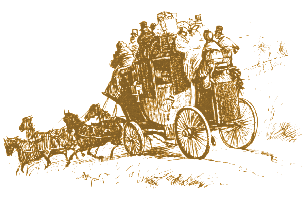A BRIEF HISTORY OF OMAHA, NE
The name Omaha (from an Indian tribe of the same name) means "above all others upon a stream." Omaha was the capital of the Nebraska Territory. However, when Nebraska became a state in 1867, Lincoln became the capital, while Omaha continued to be an important agricultural and railroad center. Omaha began a period of rapid growth in 1914, after recovering from a devastating blizzard in 1888 and a financial panic in 1893.During the mid-1800s explorers, trappers, traders, gold-seekers, and settlers paused in Omaha for rest, a last inspection of equipment, and the purchase of supplies before heading into the wilds. In 1812 a fur-trading post was established, and in 1846 a group of about 12,000 Mormons made Omaha their home for the winter.
Founded in 1854, Omaha lies at the eastern edge of Nebraska, across the river from Council Bluffs, Iowa. In 1863 it beacme the starting point for the Union Pacific Railroad.
Boys Town, which lies to the west of Omaha, was established by Rev. Edward J. Flanagan in 1917 as a home for troubled boys.
Established in 1895, Ak-Sar-Ben (Nebraska spelled backwards) is Omaha's leading civic ogranization.
Omaha has several colleges and universities, including the University of Nebraska at Omaha, Creighton University, Metropolitan Technical Community College, University of Nebraska Medical Center, and the College of St. Mary.
To the south of the city is Fontenelle Forest, which was named by the federal government as one of the top seven natural history landmarks in the United States.
Also see: History of South Omaha, Douglas County, Nebraska
